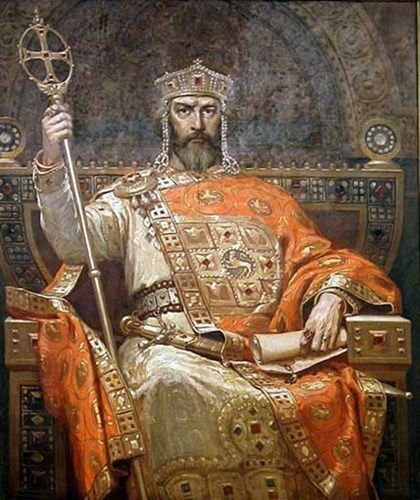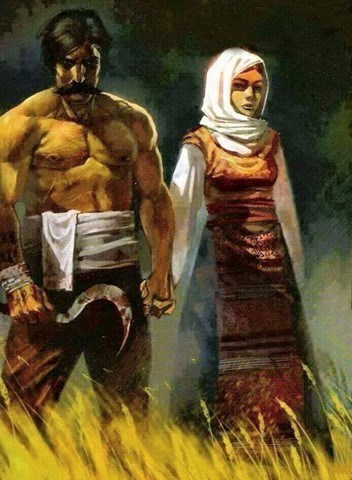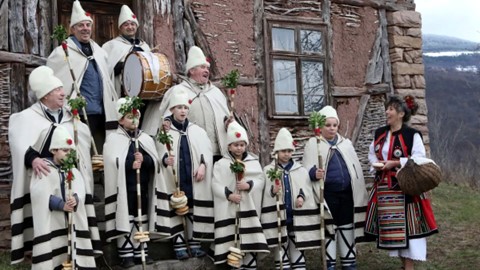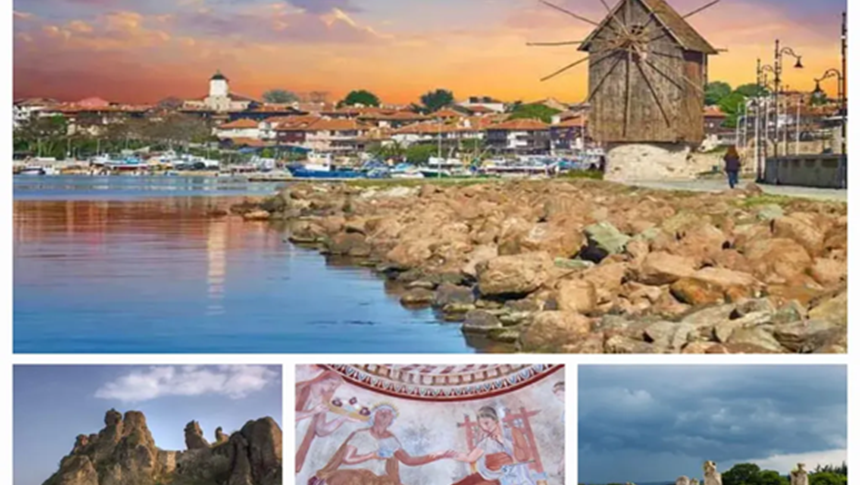Bulgaria is a small country in Southeast Europe and occupies the eastern part of the Balkan Peninsula. The territory of the country is 110,994 km2. Bulgaria also owns 62 islands in the Danube River and 7 small islands in the Black Sea. Bulgaria is a Balkan nation with a diverse terrain spanning the Black Sea coast, mountainous interior, and rivers including the Danube. A cultural melting pot of Greek, Slavic, Ottoman, and Persian influences, it has a rich heritage of traditional dance, music, costumes, and crafts. At the foot of the dome-shaped Vitosha is its capital Sofia, dating from the 5th century. The population of Bulgaria is 6,951,482 people according to NSI data as of December 31, 2019. Tourism in Bulgaria is one of the largest contributors to the country's GDP. The number of tourists is growing every year, with the number expected to reach 20 million by 2020. Most tourists head to either the winter resorts or the summer resorts, depending on the season. The prospects for developing tourism are great, as the country has potential due to its natural, cultural, and historical attractions. Bulgarian customs are specific to Bulgaria and Bulgarians, diverse or constantly repeated actions of people, related to the worship of God, holy martyrs, folk heroes, nature, people's health, chasing away evil spirits, etc. They derive from the combination of pagan and Christian understandings of the world and space and are usually arranged in a calendar sequence. For generations, people have orally transmitted the stories related to them, thus preserving the national culture and heritage.
Prehistory and Antiquity

At the beginning of the 70s of the 20th centuries, an archaeological discovery shook the world - near Varna, in an ancient necropolis from the end of the Chalcolithic era, a golden treasure was discovered, which shattered all known theories about the development of human civilization. The Bulgarian lands have inherited some of the most ancient cultural treasures in Europe, the Varna Golden Treasure from the 5th - early 4th millennium BC, belonging to the Varna culture, is the oldest processed gold in the world. The largest group of gold objects discovered so far in the world – from 297 graves located on an area of about 7,500 square meters, more than 3,000 gold objects with a total weight of more than 6 kilograms were excavated. This amount many times exceeds all the gold that has been found from the period of the Stone-Copper Age in the whole world. The Balkans were inhabited by the Thracians, among whom are widespread dolmens, mounds, and the image of the Thracian horseman (see Thracian art). The Thracians were the first significant civilization that appeared on the territory of today's Bulgaria. Their presence is attested to the 12th century BC, but there are insufficient historical sources for their origin. They most likely descended from a Proto-Thracian people, which included representatives of both indigenous populations and Indo-European peoples. Although politically fragmented, their achievements in the arts and economy were comparable to those of the ancient Greeks. The Thracians lived divided into different tribes until 480 BC, when King Teres united most of them under the rule of the Idris kingdom, which was the first unified kingdom of the predecessors of the Bulgarians.
First Bulgarian state (681 – 1018)
There is a legend that says that when the khan Kubrat was dying, he ordered his sons to bring a bundle of sticks and told them to break it in two. As none of the sons could break the bundle, the Khan took the sticks and broke them one by one with his feeble hands. The sons understood their father's message: their strength depends on their unity.

In 632, with the creation of Great Bulgaria, the foundations of Bulgarian statehood were laid. In the course of Great Bulgaria's war with the Khazars, Asparukh, Kubrat's third son, was pushed southwest to the Danube and settled in the Ongle region. In the summer of 680, the Byzantine emperor Constantine IV Pogonatus (668 – 685) launched a campaign against the proto-Bulgarians. The defeat of the Byzantines and the subjugation of the population by the proto-Bulgarians ended with the conclusion of a peace treaty in the summer of 681, through which Asparukhova Bulgaria was recognized by Byzantium.
Middle Ages and Renaissance

One of the oldest Bulgarian cultural monuments is the Madar Horseman (VIII century), included in the World Cultural Heritage List (UNESCO). The first Bulgarian capital was built according to the Roman model with a strong fortress wall surrounding palaces, churches and temples, baths, and other public buildings, in the style of which elements from Central Asia and the Middle East are intertwined. After the adoption of Christianity and the ascension of Tsar Simeon the Great, the capital and cultural centre of the Bulgarian state moved to Preslav. The subsequent period is also known as the Golden Age of Bulgaria, in which Bulgarian culture reached its first apogee.

In 886, Bulgaria adopted the Glagolitic alphabet, created by St. Cyril and St. Methodius. The only literary source that indicates the year in which the Glagolitic script was created is the work "About the letters" ("О писмёнхъ") by the old Bulgarian writer Chernorizets Hrabar, namely 6363 according to the Alexandrian calendar, or 855/863. according to the current calendar year. The Glagolitic alphabet was gradually replaced by the Cyrillic alphabet, created in the Preslav Book School at the beginning of the 10th century.
Ottoman Bulgaria

Bulgarian culture in general has a strong oriental influence due to Ottoman rule. Bulgaria misses the progressive European currents of the Renaissance, Reformation, Enlightenment, and XIX century. The Renaissance era is a cultural-historical period characterized by a revival of Bulgarian traditions, but beyond the elitist culture present in Western European countries. The Ottoman rule or also Ottoman power and Ottoman domination, also called, mainly in the Bulgarian Renaissance literature as Ottoman slavery. The period from the end of the 14th to the end of the 19th century, during which there was no independent Bulgarian state, but lands inhabited by Bulgarians are under the rule of the Ottoman Empire.
March 3, 1878 - Bulgaria Liberation Day

The liberation of Bulgaria covers the events related to the restoration of Bulgarian statehood after almost five hundred years of Ottoman rule. This happens as a result of the national Revival, which led to the recognition of the Bulgarian Exarchate and the organization of the April Uprising. The uprising gave Russia a reason to start the Russo-Turkish War (1877-1878).
March 3, Bulgaria's Liberation Day, has been a national holiday since 1990. On March 3 (February 19, old style) 1878, the San Stefano Peace Treaty was signed between Russia and the Ottoman Empire, ending the Russo-Turkish war of 1877-1878. The war, which is the tenth in the series of Russo-Turkish wars, is called Liberation, as it led to the liberation of part of the Bulgarians from the Ottoman Empire and the creation of the Third Bulgarian State.
Bulgarian traditions
After the liberation of Bulgaria, as well as the subsequent first and second world wars, it was a time when it was not at all easy for the Bulgarian people to recover. But it is precisely the traditions that were created and honoured during such a long and difficult period that Bulgaria had to go through in recent centuries that preserved the Bulgarian identity and spirit.
These are some of the most popular Bulgarian traditions and customs:
Kukerstvo

Kukersrvo is an ancient Bulgarian ritual for banishing evil spirits and demonic forces. The performers (kukers) dance their ritual dance dressed in attractive costumes and scary wooden-framed masks. Their clothes are made of threads, wool and scraps of various fabrics. The traditional kuker dance is performed on holidays such as Christmas, Epiphany, Sirni Zagovezni and New Year, as well as during Bulgarian folklore festivals.
Nestinarstvo

Nestinarstvoto is a performance of a dynamic folk dance on embers. This is one of the most spectacular Bulgarian rituals, precisely because the nestinars step barefoot on hot coals!
Tradition dictates that the embers be prepared by the senior nestinars, who do not participate in the dance, but make way for the young nestinars. The Nestinar dance is a huge attraction for foreign tourists and is often performed at large folk assemblies and festivals.
Survakane

The folk custom of survakarstvo is well known to Bulgarian families and has not yet sunk into oblivion. The New Year's ritual is a favorite of the little survakars, who go round village homes and survakat the elders for health and longevity.
According to old Bulgarian traditions, survakars are children up to 12 years old. They go around the houses in their village with colorful survaknica made of twigs and decorated with popcorn, dried fruits, yarn and wool. The "survakane" rite itself includes patting the back with the survaknica and reciting a verse, with a wish for a long life. In return, survakars receive money or food from their elders as a form of gratitude.
Baba Marta

The legendary image of Baba Marta has been present in Bulgarian folklore for a long time. It is represented in more than one or two fairy tales and proverbs, as the older sister of Little Sechko (January month) and Big Sechko (February month). The holiday is celebrated on March 1 - the arrival of Baba Marta, and every Bulgarian wears a martenitsa for health. The classic martenitsa is two woolen threads wrapped around each other, and its appearance dates back to the 1930s. The holiday is also celebrated by other peoples of the Balkan Peninsula, with different customs in different parts. In Bulgaria, the two classic colors of the Martenitsa symbolize: red - vitality brought by the power of the sun and white - purity and joy. In some areas, the color green is also often used. It is believed that as soon as we see a blossoming tree or a stork (the heralds of spring), we can take down the martenitsa and decorate the tree with it.
Lazarus Day

The Orthodox Church celebrates the church holiday of Lazarus Day, which is always on the penultimate Saturday before Easter. Traditionally, green willow branches are plucked on Lazarov's Day, which will decorate the doors the next day - Vrabnitsa (Flower).
On this day, the festive rite begins early in the morning. The girls are divided into groups of 5-6 lazarki each and start walking around the village dressed in bridal clothes and a braided wreath of flowers on their heads. Girls and women take part in the lazarus Day are grouped by age. In the flock there are songbirds, walkers, one of the lazarkas carries a basket of eggs. They walk around the village on Saturday from noon and Sunday until noon, entering each house, singing a song for each member of the family. They play an open Lazarus dance. According to folk beliefs, the owner of the house must give each lazarka a raw egg, which symbolizes immortality. In addition, spells were broken with it and fortune-telling was done with it. A house that is visited by lazarkas is considered lucky and blessed. At the end of the day, all the girls gather by a river, throw wreaths from their hair into the water, and whichever wreath is carried away first, she will be married first.
Easter - The egg fight/Dyeing the eggs

The traditions and customs of preparing for Easter date back to ancient times, managing to survive to this day in our folk psychology. Dyeing the eggs is one of the main customs, with the first egg always being red. After it is painted, it is separated from the others and kept until the following Easter, when it is checked whether the egg has been preserved. It is believed that a full egg is a symbol of a fertile year. In different parts of Bulgaria, different techniques are used to decorate the eggs - leaves from plants are used, traditional elements and embroidery are painted with wax, or the egg is dyed with different colors and crystals. The egg fight is the most fun part of the holiday, especially looked forward to by young children. The one whose egg remains intact is called the "borak", who will be surrounded by well-being, happy moments and health throughout the year. With the very custom of breaking the eggs, it is considered that we show the desire and struggle for victory.
Rose Festival

The celebration of the holiday dates back to 1903, when the citizens of Kazanlak first organized the "Festival of the Rose" in honor of the Bulgarian butter rose (Damask rose/Damascena). The holiday is dedicated not only to the beauty of flowers, but also to charity, as a number of exhibitions, workshops and stands are organized, the proceeds of which go to charity. Enriched with a number of events, it also includes the "Roseberry and Rose Brewing" ritual, visited by tourists from different parts of Bulgaria and the world, during the second, culminating day of the Rose Festival in Kazanlak (May/June). Rose pickers and dance troupes, dressed in beautiful folk costumes, perform authentic folk dances in the rose gardens and invite visitors to pick from the buttery Bulgarian rose and taste the legendary rose jam.
Caroling (Koleduvane)

Caroling is one of the traditional Bulgarian customs. The time for caroling is strictly defined by tradition – from midnight to sunrise on Christmas Eve. As the sun rises, they lose this power and stop caroling. Carol songs are performed during the caroling - on Christmas Eve, groups of boy "carolers", led by an older man called "stanenik", go around a predetermined neighborhood and sing songs on the road, in front of the house and on the house, as the wishes in these songs are also dedicated to the host (owner). Preparations begin on December 20. The Christmas carolers are in traditional holiday clothing and with special decorations on their caps. From midnight to morning, they will love homes. On the way, in front of the door and in the house, they sing valued ritual songs, different in motives, according to the place of performance and the person for whom they are sung. In general, they are a ritual wish for health and happiness in families and are acquired in the economy. After the songs, the master of the house showered them with gifts.
Conclusion
In recent years, these and many other customs have increasingly attracted the attention of tourists, and with each passing year the organized mass celebrations turn into a tourist attraction and promoting of Bulgarian culture and traditions.
In recent decades, Bulgaria, following the Western model of imitation, followed after the long and strict regime of communism, had forgotten its own identity and some of its own traditions, while at the same time it began to observe foreign ones. In the past few years, during the pandemic, we were given time to reflect and returned to our roots and the desire not to lose our identity and the fighting spirit that has preserved us over the years as a nation. During all the difficult years, historically, the spirit of Bulgaria, Bulgarian music, traditions, and a mix of customs has saved us for the joy of young and old. Fortunately, with such a rich history, it is not difficult to have such a rich range of traditions and cultural events that are unique in their own right. Every new season, month even during the year is a source of various usual and more unusual traditions and observances, each unique in itself and worth seeing live.
Bulgaria and its history are proverbial for Bulgarian folklore, songs, dances, and customs. Over the years, they have been handed down from generation to generation and preserved to this day. Thanks to technology, it is now easy to find detailed information about various places and events happening around the world. Bulgaria is starting to take advantage of its rich past and culture and find new horizons for its presentation to the world. Although Bulgaria is small in area, it is not inferior in terms of history and traditions.
References:
(25), valeripetrov and (66), steemitboard (2022) National holiday of Bulgaria March 3 !!!, Steemit. Available at: https://steemit.com/steemit/@valeripetrov/nacionalen-praznik-na-blgariya-3-ti-mart (Accessed: December 1, 2022).
20 impressive sights in Bulgaria that you must visit! (2022) Vote for Bulgaria. Available at: http://www.bgnow.eu/news.php?cat=2&cp=0&newsid=40953 (Accessed: December 1, 2022).
Bulgaria (2022) Wikipedia. Wikimedia Foundation. Available at: https://bg.wikipedia.org/wiki/%D0%91%D1%8A%D0%BB%D0%B3%D0%B0%D1%80%D0%B8%D1%8F#%D0%9D%D0%B0%D1%81%D0%B5%D0%BB%D0%B5%D0%BD%D0%B8%D0%B5 (Accessed: December 1, 2022).
Bulgarian alphabet (2022) Wikipedia. Wikimedia Foundation. Available at: https://bg.wikipedia.org/wiki/%D0%91%D1%8A%D0%BB%D0%B3%D0%B0%D1%80%D1%81%D0%BA%D0%B0_%D0%B0%D0%B7%D0%B1%D1%83%D0%BA%D0%B0 (Accessed: December 1, 2022).
Bulgarian customs (2021) Wikipedia. Wikimedia Foundation. Available at: https://bg.wikipedia.org/wiki/%D0%91%D1%8A%D0%BB%D0%B3%D0%B0%D1%80%D1%81%D0%BA%D0%B8_%D0%BE%D0%B1%D0%B8%D1%87%D0%B0%D0%B8 (Accessed: December 1, 2022).
Hands down from March 3rd! (2018) Hands down from March 3rd! – Official blog of Kostadin Kostadinov. Available at: https://kostadin.eu/2018/02/25/%D0%B4%D0%BE%D0%BB%D1%83-%D1%80%D1%8A%D1%86%D0%B5%D1%82%D0%B5-%D0%BE%D1%82-3-%D0%BC%D0%B0%D1%80%D1%82/ (Accessed: December 1, 2022).
If it weren't for Turkish slavery, Bulgaria would be 40 million (2022) Novini. Available at: http://onovini.eu/2019/04/%D0%B0%D0%BA%D0%BE-%D0%BD%D0%B5-%D0%B1%D0%B5%D1%88%D0%B5-%D1%82%D1%83%D1%80%D1%81%D0%BA%D0%BE%D1%82%D0%BE-%D1%80%D0%BE%D0%B1%D1%81%D1%82%D0%B2%D0%BE-%D0%B1%D1%8A%D0%BB%D0%B3%D0%B0%D1%80%D0%B8%D1%8F/ (Accessed: December 1, 2022).
Lalkov, P.M. (2007) Eastern Europe, The History Files. Available at: https://www.historyfiles.co.uk/FeaturesEurope/EasternBulgaria_Kubrat.htm#:~:text=There%20is%20a%20legend%20which,one%20with%20his%20feeble%20hands (Accessed: December 1, 2022).
Liberation of Bulgaria (2022) Wikipedia. Wikimedia Foundation. Available at: https://bg.wikipedia.org/wiki/%D0%9E%D1%81%D0%B2%D0%BE%D0%B1%D0%BE%D0%B6%D0%B4%D0%B5%D0%BD%D0%B8%D0%B5_%D0%BD%D0%B0_%D0%91%D1%8A%D0%BB%D0%B3%D0%B0%D1%80%D0%B8%D1%8F#%D0%A8%D0%B8%D0%BF%D1%87%D0%B5%D0%BD%D1%81%D0%BA%D0%B0_%D0%B5%D0%BF%D0%BE%D0%BF%D0%B5%D1%8F (Accessed: December 1, 2022).
Ottoman Bulgaria (2022) Wikipedia. Wikimedia Foundation. Available at: https://bg.wikipedia.org/wiki/%D0%91%D1%8A%D0%BB%D0%B3%D0%B0%D1%80%D1%81%D0%BA%D0%B8%D1%82%D0%B5_%D0%B7%D0%B5%D0%BC%D0%B8_%D0%BF%D0%BE%D0%B4_%D0%BE%D1%81%D0%BC%D0%B0%D0%BD%D1%81%D0%BA%D0%BE_%D0%B2%D0%BB%D0%B0%D0%B4%D0%B8%D1%87%D0%B5%D1%81%D1%82%D0%B2%D0%BE (Accessed: December 1, 2022).
Petrov, P., Karaulyanova, E. and Spiritell (2022) Spiritell. Available at: http://Spiritell.com/ (Accessed: December 1, 2022).
Sonrisa, M. (2022) 5 Bulgarian traditions and folk customs preserved to this day, Spiritell. Available at: https://spiritell.com/5-%D0%B1%D1%8A%D0%BB%D0%B3%D0%B0%D1%80%D1%81%D0%BA%D0%B8-%D1%82%D1%80%D0%B0%D0%B4%D0%B8%D1%86%D0%B8%D0%B8-%D0%B8-%D0%BD%D0%B0%D1%80%D0%BE%D0%B4%D0%BD%D0%B8-%D0%BE%D0%B1%D0%B8%D1%87%D0%B0%D0%B8-%D0%B7/ (Accessed: December 1, 2022).
Tosseva, C. (2007) Simeon the Great - an unreached Bulgaria, News.bg. Available at: https://news.bg/curious/simeon-veliki-edna-nedostignata-balgariya.html (Accessed: December 1, 2022).
Trojanska, N. (2022) The Varna gold treasure - a harbinger of the civilizations of Sumer and Egypt, BratBg. Available at: https://brat-bg.com/bg/interesting/bg-incognita/on-sea/out-of-beach/3861-2018-06-04-07-23-32-1 (Accessed: December 1, 2022).
Varna Chalcolithic Necropolis (2022) Wikipedia. Wikimedia Foundation. Available at: https://bg.wikipedia.org/wiki/%D0%92%D0%B0%D1%80%D0%BD%D0%B5%D0%BD%D1%81%D0%BA%D0%B8_%D1%85%D0%B0%D0%BB%D0%BA%D0%BE%D0%BB%D0%B8%D1%82%D0%B5%D0%BD_%D0%BD%D0%B5%D0%BA%D1%80%D0%BE%D0%BF%D0%BE%D0%BB (Accessed: December 1, 2022).
24Kitchen (2022) Caroling custom, Welcome! Available at: https://www.24kitchen.bg/articles/obichaiat-koleduvane (Accessed: December 1, 2022).
Bulgarian customs to this day (2022) – Bulgaria Mall Blog. Available at: https://blog.bulgariamall.bg/%D0%B1%D1%8A%D0%BB%D0%B3%D0%B0%D1%80%D1%81%D0%BA%D0%B8%D1%82%D0%B5-%D0%BE%D0%B1%D0%B8%D1%87%D0%B0%D0%B8-%D0%B8-%D0%B4%D0%BE-%D0%B4%D0%BD%D0%B5%D1%81/ (Accessed: December 1, 2022).
Christmas caroling (2021) Wikipedia. Wikimedia Foundation. Available at: https://bg.wikipedia.org/wiki/%D0%9A%D0%BE%D0%BB%D0%B5%D0%B4%D1%83%D0%B2%D0%B0%D0%BD%D0%B5 (Accessed: December 1, 2022).
Dariknews (2019) It's Lazarus Day - traditions and customs, dariknews.bg. Available at: https://dariknews.bg/novini/velikden/lazarovden-e-tradicii-i-obichai-2160647 (Accessed: December 1, 2022).
A few verses for survaka (2022) Chernomore. Available at: https://www.chernomore.bg/a/16-kultura/125366-nyakolko-stihcheta-za-survakane (Accessed: December 1, 2022).
National holiday March 3rd (2022) Liberation Day of Bulgaria - National holiday March 3. Available at: https://www.izbite.com/bg/%D0%BD%D0%B0%D1%86%D0%B8%D0%BE%D0%BD%D0%B0%D0%BB%D0%B5%D0%BD-%D0%BF%D1%80%D0%B0%D0%B7%D0%BD%D0%B8%D0%BA-%D1%82%D1%80%D0%B5%D1%82%D0%B8-%D0%BC%D0%B0%D1%80%D1%82 (Accessed: December 1, 2022).
Nestinarstvo – Bulgari Village, Bulgaria (2022) SOAS. Nhan Huynh. Available at: https://docu-j.soas.ac.uk/nestinarstvo-bulgari-village-bulgaria/ (Accessed: December 1, 2022).
Vladislavov, I. (2022) 10 Bulgarian customs preserved to this day • © the 10 most, © Top 10. Available at: https://www.10te.bg/obshtestvo/10-balgarski-obichaya-zapazeni-i-do-dnes/ (Accessed: December 1, 2022).
World famous granny marta (2022) Folklore. Available at: https://bnr.bg/en/post/101620843/world-famous-granny-marta (Accessed: December 1, 2022).

